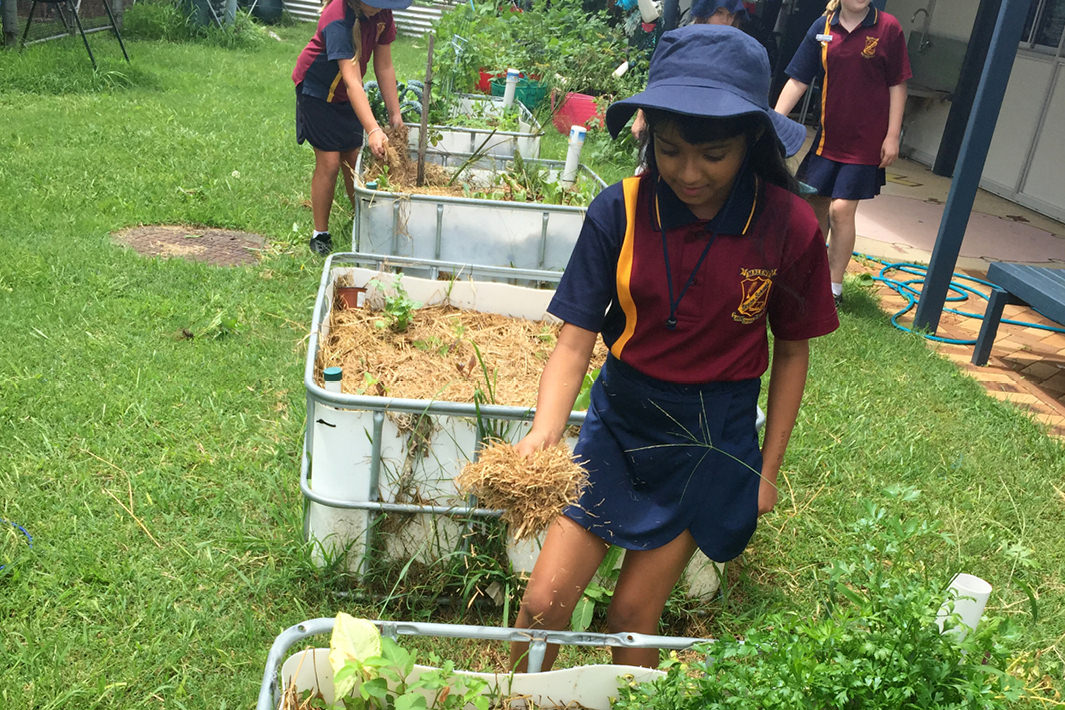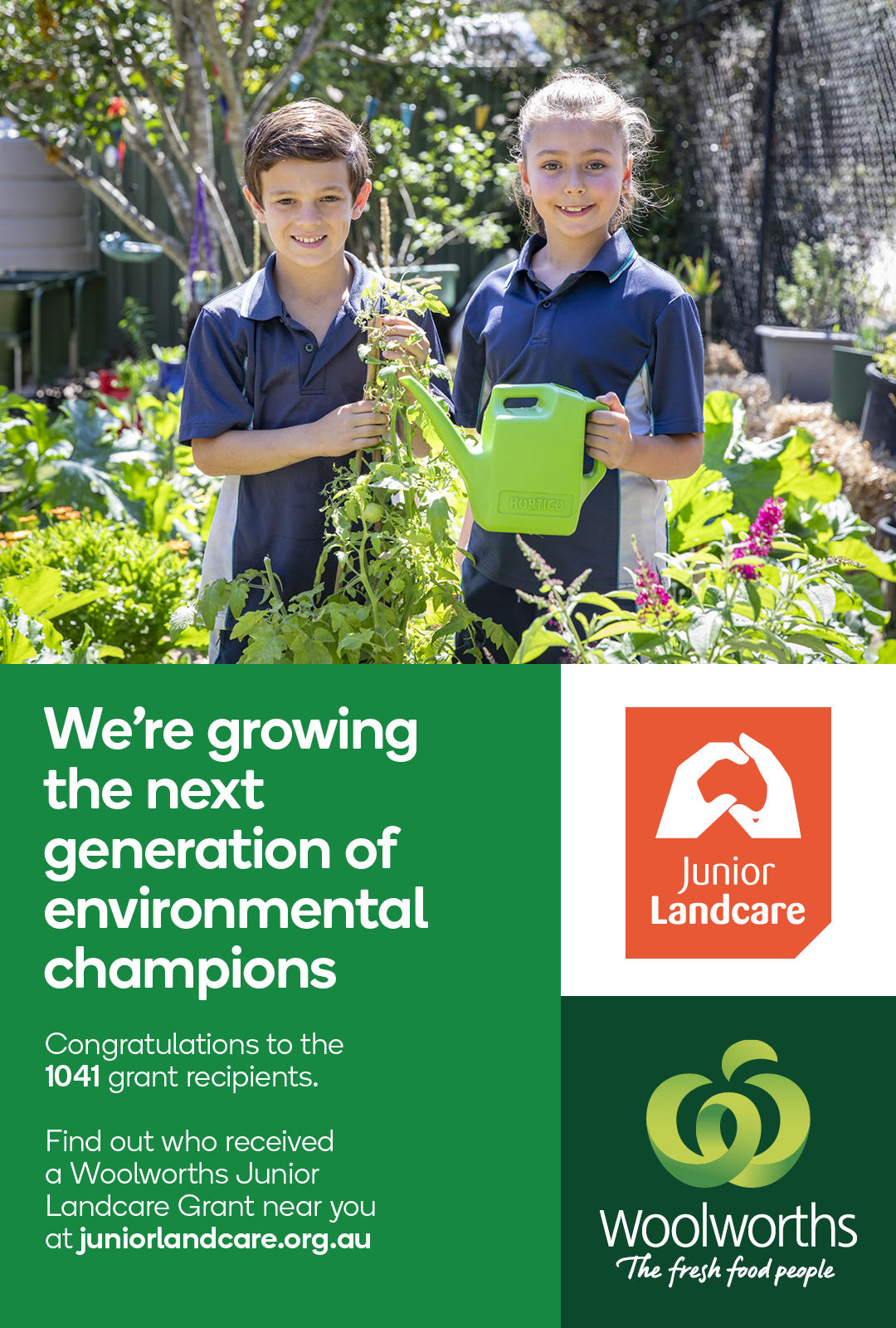CASE STUDY

Age Groups: 7-13
Grant Name:
School: Maleny State School, Queensland
Grant Sponsor:
Project Overview:
Located in Queensland’s Sunshine Coast, Maleny State School has been recycling all waste, including a composting program to reduce landfill. They wanted to use this compost to help grow vegetables and other produce in a water efficient way.
To do this, they applied for, and were successful in receiving a 2019 Bushmans Junior Landcare Grant. With the grant funds, the school installed eight wicking beds to grow vegetables using harvested rainwater, and installed a native beehive.
Environmental Outcomes
The installation of the eight wicking beds resulted in a major reduction in watering with the beds only needing a top up once every three weeks. The wicking beds provided more produce than the school’s existing garden beds.
Students thoroughly enjoyed making the wicking beds, with staff observing how motivated students were to work together, especially with the heavier work of carting soil, compost and sand.
The school composts all food scraps and uses the compost on the garden. Students were able to see the richness in the soil with an abundance of worms and were involved in turning the soil after plants had completed their season. As vegetables were replaced, compost was added and soil turned over in the wicking beds, making the students aware of worms and the moisture level of the soil.
They found that mulching the wicking beds reduced weeds allowing students to use the time they normally spend weeding, to propagate seeds. Those seeds were then used to replace plants in the wicking bed once the harvest season was finished.
With the installation of a native beehive in the garden area, the children could see the importance of flowering plants and were involved in growing sunflowers for the garden area.
Educational Outcomes
Students were able to share knowledge with school and parents, regularly documenting progress in the school newsletter. They created their own design for a dipstick and studied other ways to conserve water.
Students created recipes like kale chips and used the vegetables, herbs and fruit from the wicking bed gardens to make healthy juices and snacks.
Observations and recordings were made of the activity of the native bees and students were aware of the flowering plants and the need to keep planting the different vegetables and herbs that would allow the bees to pollinate. A viewing window in the box enabled the students to watch the hive being created and take regular photos to share.
This whole project has been invaluable in instilling sustainable practices in the student cohort. This knowledge has been shared with parents and the wider community.
Conclusion
A member of the school’s P&C commented, “I have been watching this fantastic environmental project and have admired the school’s very effective approach, i.e., setting a target, publicising this, getting buy-in from the students to reach the target, regular and shared monitoring, acknowledging contributors and celebrating success!
This has been great modelling for the students about achieving goals and performing. Of course my thanks also for making recycling cool and allowing an interest in gardening and conserving resources to develop among the students. So very important in the world today.”
A teacher, leading the project said, “Students enjoyed visiting the garden to see new growth and to pick and taste produce. The highlight was the fact that the students had ownership of the project and were bringing their parents down to the garden to show them the progress and take home bags of fresh vegetables and herbs.”
 Teachers & Educators
Teachers & Educators Youth or Community Groups
Youth or Community Groups